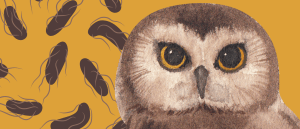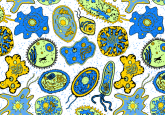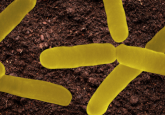The risks of methylmercury contamination in marine ecosystems

Original story from Umeå University (Sweden).
Climate change may be increasing the spread of a neurotoxin, methylmercury, in the ocean.
A recent study at Umeå University (Sweden) has revealed that climate-driven oxygen loss in the Black Sea thousands of years ago triggered the expansion of microorganisms capable of producing the potent neurotoxin methylmercury. The study suggests that similar processes could occur in today’s warming oceans.
Methylmercury is a highly toxic compound that accumulates in fish and seafood, posing severe health risks to humans. It is formed when certain microbes convert inorganic mercury under low-oxygen conditions.
Today, climate change is causing such oxygen-depleted areas to expand in coastal marine environments, including parts of the Baltic Sea. Warmer and more stagnant waters mix less efficiently, and increased algal blooms contribute to oxygen loss in deeper layers, creating ideal conditions for these microbes.
Traces of ancient microbes
By analyzing DNA from Black Sea sediments spanning the past 13,500 years, researchers detected genes (hgcA) associated with microorganisms that produce methylmercury. The highest abundance occurred during the warm and humid period around 9000–5500 years ago, when oxygen levels in the water decreased significantly – a situation similar to ongoing trends observed in modern seas and coastal areas.
“Our findings show that climate warming and oxygen loss alone – without industrial mercury pollution – can create hotspots for methylmercury production,” explained Eric Capo, Assistant Professor at the Department of Ecology and Environmental Science at Umeå University and lead author of the study.
“This raises serious concerns for the future, as expanding oxygen-deficient zones may increase human exposure to this neurotoxin through seafood consumption,” commented Meifang Zhong, first author of the study and doctoral student in Eric Capo’s research group.
 Antibiotic-resistant E. coli found in wild birds
Antibiotic-resistant E. coli found in wild birds
Wild birds at a Brazilian rehabilitation center are carriers of antibiotic-resistant Escherichia coli, common in hospital-acquired human infections.
Oxygen loss and mercury pollution
In the study, the researchers compared the microbial signal from ancient sediments with the one from the present-day water column and found both similarities and striking differences. While modern mercury-methylating microbes in the Black Sea are influenced by industrial mercury pollution and eutrophication, those living thousands of years ago were primarily fueled by climate-driven oxygen loss and the accumulation of organic matter.
The results highlight the importance of considering both past and present microbial responses to environmental change. By studying ancient microbial DNA, the researchers show how climate-driven deoxygenation has shaped – and will continue to shape – the risks of methylmercury contamination in marine ecosystems.
This article has been republished from the following materials. Material may have been edited for length and house style. For further information, please contact the cited source. Our press release publishing policy can be accessed here.





